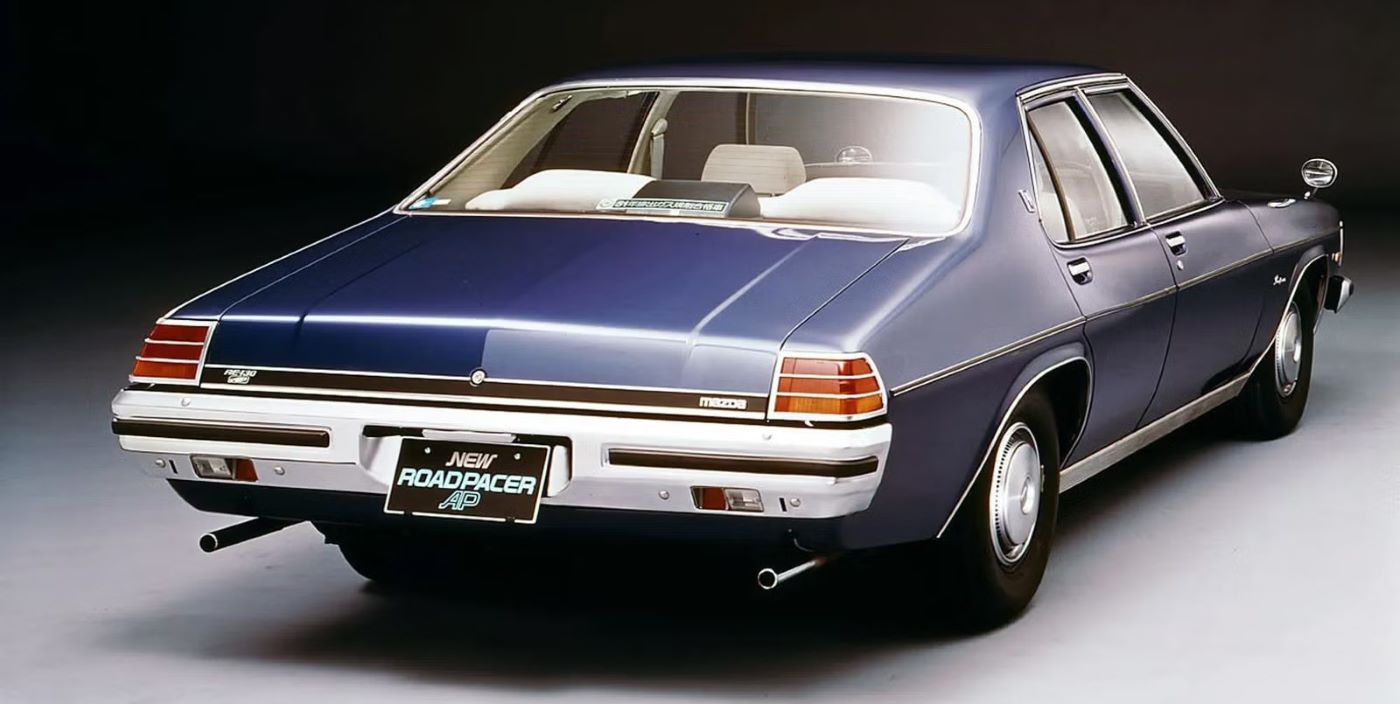
The Mazda Roadpacer is a unique and relatively obscure vehicle in Mazda’s history, known for its unusual combination of a large, luxurious body and a rotary engine. Here’s an overview of the Mazda Roadpacer:
Overview of the Mazda Roadpacer:
- Manufacturer: Mazda
- Model: Roadpacer AP (Anti-Pollution)
- Production Years: 1975–1977
- Body Style: 4-door sedan
- Assembly: The Roadpacer was based on the Holden HJ Premier, an Australian car, and was assembled in Japan after Mazda imported the bodies.
Engine and Performance:
- Engine: 13B Wankel rotary engine
- Displacement: 1.3 liters (rotary engines are measured differently from piston engines)
- Power Output: Approximately 135 horsepower
- Transmission: 3-speed automatic transmission
- Layout: Front-engine, rear-wheel-drive (FR layout)
Design and Features:
- Exterior Design: The Roadpacer retained the large, boxy, and imposing design of the Holden HJ Premier. It featured a long wheelbase and a spacious body, which was characteristic of executive sedans of the era.
- Interior: The interior was designed to be luxurious and comfortable, with high-quality materials, spacious seating, and advanced features for the time, such as air conditioning, power windows, and a sophisticated audio system.
- Advanced Features: The Roadpacer was equipped with several innovative features for its time, including a speed-sensitive locking system for the doors, a chime that would sound if the car exceeded 55 mph, and an automatic rear windscreen wiper that activated when reversing.
Market Position:
- Target Audience: The Mazda Roadpacer was marketed as a high-end luxury sedan for government officials and executives in Japan. It was an attempt by Mazda to enter the luxury car market and compete with established brands like Toyota and Nissan, which offered large executive sedans such as the Toyota Century and Nissan President.
- Sales: The Roadpacer was not commercially successful. Its combination of a large, heavy body with a rotary engine, which was more suited for smaller, sportier cars, resulted in poor fuel efficiency and underwhelming performance. This mismatch in design and engine choice led to limited sales, with only around 800 units produced.
Legacy:
- Rarity: Due to its limited production run and the unusual nature of the vehicle, the Mazda Roadpacer is considered a rare collector’s item today. Its unique history as a luxury car with a rotary engine makes it an interesting part of Mazda’s automotive heritage.
- Significance: The Roadpacer is often seen as a curiosity in Mazda’s history, representing an ambitious but ultimately flawed attempt to create a luxury vehicle using the brand’s rotary technology. It highlights Mazda’s willingness to experiment and push the boundaries, even if the results were not always commercially successful.
The Mazda Roadpacer remains an intriguing footnote in the company’s history, symbolizing both the potential and the limitations of rotary engine technology in applications beyond sports cars. Its rarity and unique concept continue to attract interest from automotive enthusiasts and collectors.


You must be logged in to post a comment.